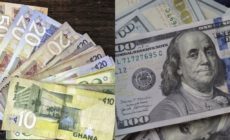The above-mentioned literature focused on the impact of exchange rate volatilities on economy for both developed and developing countries. The generation conclusions were that, depending on the state of the economy, a country may benefit from currency depreciation or may even lose its international competitiveness due to currency depreciation.
In fact, Alfred Marshall (1879) unambiguously delineated the economic benefits of currency depreciation in his earliest and famous publication “The Theory of Foreign Trade”. The principles in that publication, which would later become Marshall-Lerner-Robinson (MLR) principle (condition) in modern economics of international trade, were improved and republished by Abba. P. Lerner and Joan Robinson independently. Lerner and Robinson affirmed the Marshallian principle and held that depreciation will benefit an economy provided the price elasticity of import demand and export supply is (greater than 1) fairly elastic. An import/export price of a good is said to be elastic when a rise in import prices (expenditure) on the good would reduce the volume of quantity imported, and a fall in export price (expenditure incurred by foreign trade partners) on the good will cause a proportionate increase in volume of quantity exported.
The strength of my argument in this write-up hugely resides in the principles of the Marshal-Lerner-Robinson, also known as MLR condition. It is important to state that depreciation occurs (more appropriately) in a floating exchange rate regime, where natural interplay of demand and supply of foreign currency fixes the exchange rate whilst devaluation (occurs more appropriately in a fixed exchange rate regime) is an intentional exchange rate policy by monetary authorities to reduce the value its domestic currency in relation to another foreign currency (normally the major trading currencies). In principle however, depreciation and devaluation have the same economic effects in the foreign exchange market; thus making foreign currency expensive and local currency cheaper.
Let’s now explore the analysis of the phrase making foreign currency expensive and local currency cheaper…
The phrase essentially means that anytime the cedi depreciates you will need more cedis to get few dollars. Thus, for example if on 12/09/2019, the cedi id traded at $1 = Ghc5.25, and two months later on 10/11/2019, the cedi is traded at $1 = Ghc6.35, then we say the dollar has become more expensive and cedi cheaper relative to the dollar. Now if dollar becomes expensive, then import demand expenditure also becomes expensive (all things being equal). Also if the cedi become cheaper, then export demand expenditure becomes cheaper for the foreign trading partners, since they would need fewer dollars to acquire huge volumes of goods and service than previously. Cheaper cedis would improve Ghana’s global market competitiveness from the medium into the long run, and attract more international trade. It must be noted that in the short run, the cedi depreciation would increase import expenditure and decreases export revenue which would worsen the trade balance, thereby exacerbating the exchange rate woes, but in the long run trade balance will improve (trade surplus) and consequently improve the cedis fortunes. A sustained long run effect of cedi depreciation (according to this principle) has an in-built macro and meso-economic mechanisms to self-correct the depreciation phenomenon, translating into currency appreciation.
The MLR principle is an empirically verifiable mechanism which has helped very many emerging markets like Malaysia, Togo and more recently China (the world’s second biggest economy). The Central Bank of China in August 2015 devalued the Chinese yuan by about 3% against the US dollar. This move translated into about 6.9% growth in real GDP for the Asian giant, which some analysts say was the fastest growth rate for China since 2015. Again in August 2019, the People’s Bank of China reduced the yuan against the dollar to be traded at CYN7.00 per $1.00 (The lowest since 2008, according to some analyst). Even though the West (particularly the United State) has critically bastardized the Chinese leader, Xi Jinping for experimenting the MLR principle, and has accorded him with many draconian economic sanctions, Mr Jinping is resolute and convinced about this approach as a way to develop his economy.
The Togolese currency (CFA Franc) is no exception. The CFA Franc is said to be cheaper relative even to Ghana cedis. For example, CFA107.97 is equivalent to Gh?1. The extremely depreciated Togolese CFA has attracted more Ghanaian traders and other countries in the Sub-Sahara to buy from Togo.
The question is …”Why is Ghana not leveraging on the benefits of this time-honoured principle embedded in the constant cedi deprecation?”…
The vice President, H.E Dr Mahamudu Bawumia is famously reported to have said that “when the economic fundamentals are weak, the cedi depreciation will expose you”. This is indeed true, but if one stretches Dr. Bawumia’s comment, one might add that, if the fundamentals are strong, even cedi depreciation has some kind of in-built economic resilience to restore the currency to normalcy.
It is important at this juncture to point out by the way that, Ghana did experience some devaluation policy during the post colonial era. Ghana practised fixed exchange rate regime during this period. Starting from 1971(cedi devalued by 44%), 1972(20.4%), 1978(58.2%) till 1983(92%). In1988 however, the Ghanaian government decided to abandon the fixed exchange regime for floating regime. The Bank of Ghana started licensing Forex Bureau companies in the 1990s with regulatory supervision (known as managed floating regime). The managed floating regime has since continued till date. Under the current regime, the cedi has depreciated from 99% in 1999 through 2% in 2004 and 5% in 2011 to 8.4% in 2018.
It however appears that Ghana has still not been able to leverage on the combined effect of devaluation (under fixed regime) and depreciation (under managed floating regime) till date. This begs the question, whether the managers of the economy have been able to fine-tune the economic fundamentals aright after all. I need to remind you, my cherish reader that, before the MLR condition can effectively ripe and harness the blessings in depreciation, there are other economic pre-conditions (fundamentals) that must be set aright. If these preconditions are fine-tuned, cedi depreciation would augment (at least in the long run) Ghana’s trade balance, improve foreign reserve and elongate the import cover (which is currently about 4.1months). Some of these preconditions include, but not limited to:
(i) The nature of Ghana’s export commodities- This is particularly true because, Ghana predominantly exports primary and raw agricultural products (such as cocoa beans, gold bars, timber logs, cashew nuts, etc) in exchange for finished or semi-finished products (such as cars, chocolate, cloths, cosmetic items, you name them).This is clearly a mismatch of trade without arm’s length transactions between the trade partners. To correct this, the government and other relevant actors in the value-chain should try adding value to our exported products. For example, cocoa beans should be processed into cocoa powder or chocolate before exporting same. Timber logs must be processed into useable or semi-useable forms before exporting. In that way, we can export larger volumes of cocoa and Timber to foreign markets for more revenue.
(ii) Lack of standardized local market and storage facilities for Export commodities- As hinted earlier, most of the exported items are primary agriculture products, which we do not also have adequate storage facilities for them in order to await for favourable market turns. We quickly sell them off in foreign markets to avoid post harvest losses. Also we do not have a standardized commodity market where foreign traders can access symmetric market information, price discovery and regulatory protection inter alia. To correct this, the Government has already introduced the Ghana Commodity Index (GCX), which acts as a standardized commodity market. Government must therefore intensify public awareness for GCX, and also equip GCX to fully optimize all its intended potentials. One important objectives of GCX is to ensure constant availability of commodities on the market by suppliers. If this is properly done, a cheaper cedi would mean that foreign traders could easily access standardised market to buy exported commodities from Ghana, thereby increasing export revenues.
(iii) Taste and preference for Foreign goods over local ones – In fact taste and preference is one utility variable that has great potentials to harm price elasticity of demand for goods and services. Thus, it is believed that, people become price insensitive (inelastic) to demand for a particular good or service when they develop insatiable taste for that particular good or service. This is especially true because Ghanaians have prejudiced perception about made-in-Ghana products relative to made–in-abroad products. In that way, Ghanaian become almost price insensitive to foreign products, violating the condition contained in the MLR principle. To correct this Ghanaians must re-orient the mindsets about made- in-Ghana products. Also local manufacturer must improve the quality of these products in order to guarantee durability, assurance, and value for money for the local citizenry. The government must also set the tone by patronizing and (or) assisting local manufacturers in this regard. Kantanka automobile and electronics products could be good example for local consumption.
(iv) Domestic Inflation rate – It is important that, after depreciation has occurred which is intended to boost export and curb import, the domestic inflation rate is kept at a minimum or acceptable limit. This will boost local aggregate demand for made-in-Ghana goods, coupled with increased demand expenditure by foreigners due to cheap cedi. In fact, the success of depreciation or devaluation requires that when the external value of the currency decreases, the internal value should not be affected, else the whole purpose and benefits of depreciation are defeated. Inflation rate in China was 1.4% in 2015, 2.0% in 2016 through to 2.1 % in 2018. For Togo, inflation rate was 0.73 in 2018 and in Malaysia, 0.88 % in 2018. You attest to the fact that most Ghanaian traders prefer to buy from China and Togo. This is due to the low inflation rate prevailing in these countries, coupled with depreciated or devalued currency. For Ghana to benefit from depreciation, the Government must be able to keep inflation rate at the barest minimum, say below 3%.
(v) Expanding production capacities for Local Export Industries – This will ensure that the country is able to feed itself first, and have more to export. Cost of production, ease of doing business index, corruption perception index, etc must all work favourably towards increasing the capacities of local companies, especially those that are export driven. This way, the supply of export commodities will increase resulting in more goods and services available for export. The government needs to offer tax subsidies for these companies. Also the government’s initiative for IDIF must be export driven. Planting for Food and Jobs must also toe the same trajectory.
Weaknesses in the above pre-conditions might have been the reason why Ghana has still not been able to benefit from cedi depreciation all this while. The government and all relevant stakeholders are by this piece encouraged to set these pre-conditions at appropriate levels of intensity. This coupled with the combined corollary effects of depreciation, could galvanise Ghana to gain from the disguised blessings from currency depreciation.











 (Selorm) |
(Selorm) |  (Nana Kwesi)
(Nana Kwesi)